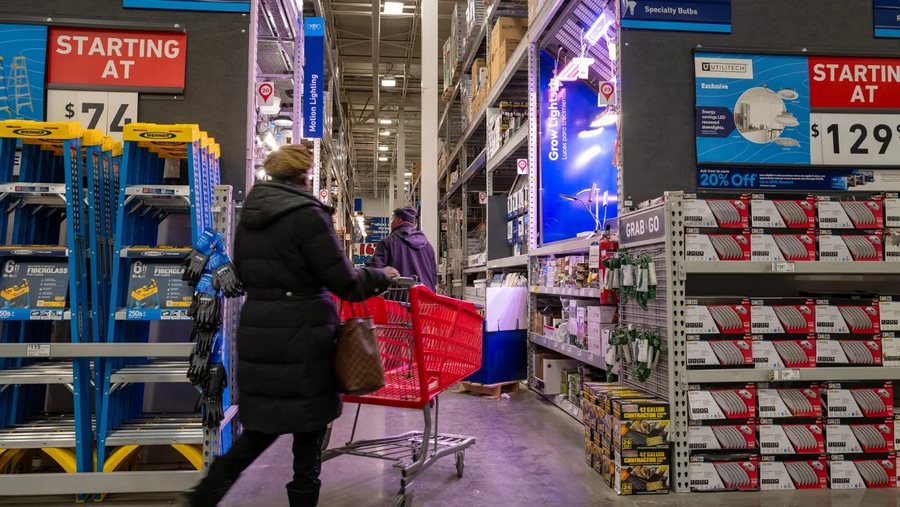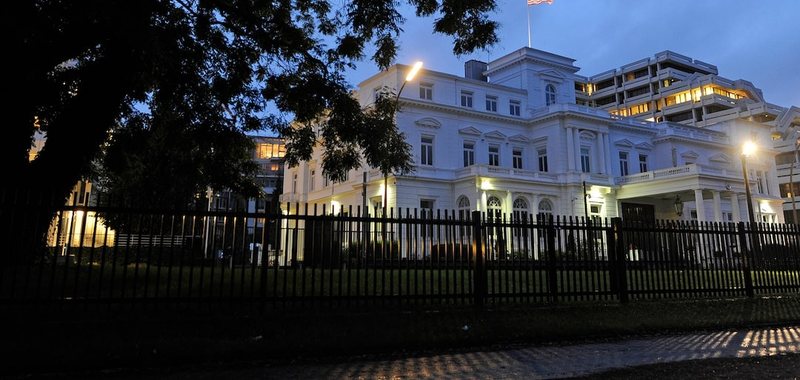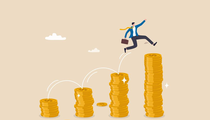Stagflation could hit the US - Trump's tariffs could worsen the difficult economic situation

The United States economy is showing signs of stagflation, with rising inflation and a slowing labor market. This could create problems for consumers and investors, driving up prices and reducing profits.
Stagflation could return to the US after nearly 50 years, as the latest economic figures point to a slowing job market and continued stagnation in inflation. President Donald Trump's new tariffs will not help improve the situation.
This risks creating a very difficult environment for consumers. Unemployment could rise and wage gains could slow, even as the cost of living rises. Getting a new mortgage or car loan would also cost more.
What is stagflation?
Stagflation occurs when the economy slows or contracts, unemployment rises, but prices continue to rise. It is a problem that first emerged in the 1970s and remains a challenge for government officials, and especially central banks, because the usual policy package does not work well.
Inflation is usually caused when the demand for goods and services increases faster than the supply. The policy response is normally to slow the economy, something that since the 1980s has meant raising interest rates. In stagflation, higher interest costs can reduce price growth, but they can also cause or worsen a recession.
The causes of stagflation are not entirely clear. In the 1970s, OPEC imposed an oil embargo on many Western countries for their support of Israel during the Yom Kippur War. This created a structural price shock that was reflected in the economy, which was not effectively addressed by the government of the time.
What are the warning signs?
Two trends in the current economy point to this problem: jobs data that has been weakening and inflation that has risen more than expected.
January consumer inflation rose. Employers added far fewer jobs in February than in January, jobless claims were worse than expected, and prices rose in the manufacturing sector.
What does stagflation mean for investors?
During the stagflation of the 1970s, both stocks and bonds took a hit. The S&P 500 index fell 48% from January 1973 to December 1974 and did not fully recover until the 1980s, as earnings growth slowed. Bonds also fell because their regular, fixed payments to investors were eroded by inflation.
Investments to weather stagflation include inflation-protected investments such as the US government's TIP bonds and natural resource companies, such as oil, gas, and minerals.
How is deflation fought?
There is no clear consensus on why stagflation ended and which government actions were actually effective in addressing the problem, as many assessments follow the ideological biases of commentators.
While economic growth recovered in the late 1970s, price gains remained faster than average until the so-called “Volcker” shock of 1979-1981, when the Federal Reserve gradually raised the base rate to 19.1% in June 1981. This increased unemployment to a peak of 10.2%, but lowered the Consumer Price Index to 10.8%.
One reason a full-blown repeat of the stagflation of the 1970s is unlikely to happen in the US is that the country no longer has a strong labor movement. Unions were then strong enough to demand wage increases that kept pace with inflation. Companies would raise their prices to cover the rising costs, creating a cycle of rising wages and prices.

Albanian education facing challenges, Kaptelli: Salary increase! - Rama: The average salary of teachers will be beyond 1 thousand euros
Albania has made significant progress in terms of its integration agenda into the European Union. As an important part of the country's development,......

New routes in the Albanian Alps - EBRD opens tender, improving accessibility and adventure tourism infrastructure
Improving accessibility and adventure tourism infrastructure in the Albanian Alps”. This is the investment that is expected to be carried out in the north of......

MUSIAD Albania, Albania-Turkey trade relations strengthened - Kisakurek: Strategic investments will be unveiled at the business forum in June
Within the framework of the glorious month of Ramadan, MUSIAD Albania hosts its first iftar, as a precursor to the organization of the largest business forum......

"Giant" ballot for the May 11 elections - Celibashi: CEC is unprepared if 25 entities bring in candidates
For the parliamentary elections on May 11, the ballot paper will be gigantic. Unlike the 2021 parliamentary elections, the candidates will not be numbered,......

EU delays disconnection from Russian energy - Bloc, awaiting US-Russia deal on Ukraine
The European Union will delay a long-awaited proposal to end Moscow's fossil fuel and nuclear technology, as US President Donald Trump seeks to normalise......

Cannabis in Albania is spread across 10 cadastral zones - Korça and Myzeqeja are excluded, what are the criteria for cultivation?
The government has approved the cadastral zones in which the cultivation of the cannabis plant for industrial purposes is permitted. The decision, which......

Student-Teacher Ratio in Albania/ Declining in Public Schools, Rising in Private Institutions
In recent years, Albania has been facing a significant challenge in its education system, the decline in the number of students in schools. According to data......

Why is the Trump administration preparing to close nearly a dozen consulates abroad?!
The US State Department is preparing to close nearly a dozen consulates, mostly in Western Europe, in the coming months and is looking to reduce its......





















